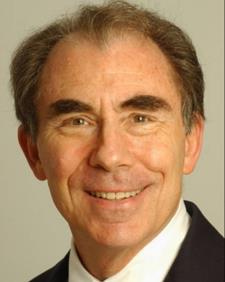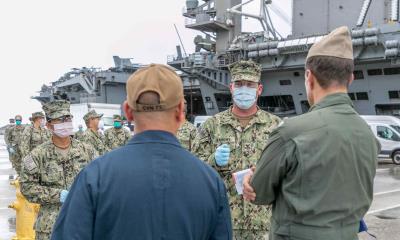Wearing Masks Will Save Lives
|
11/17/2020 |
|
According to a commentary by Dr. A. L Komaroff, in the November 5th edition of the New England Journal of Medicine, wearing masks universally in public could over 100,000 U.S. lives over the next four months.
Komaroff, founding editor of the NEJM Journal Watch, General Medicine cited a model developed by the Institute for Health Metrics and Evaluation (IHME) of the University of Washington*. Based on data from all states since the onset of the COVID-19 pandemic it is calculated that universal mask use could save 130,000 lives between September 22, 2020 and February 28, 2021. In his article Komaroff stated, "disease modeling is sometimes disparaged as just a model, not reality. That surely is true, but future reality can only be estimated using models”. He advances the reality that predictions by the IHME have been accurate with respect to incident cases of COVID, hospitalizations and fatalities.
Reducing incident cases to ‘flatten the curve’ will again be necessary as universal administration of an effective COVID vaccine may only be a reality by the middle of 2021. This is based on predicted logistic problems in distribution of vaccines requiring a cold chain and the current reluctance to receive the vaccine.
|

Dr. Anthony Komaroff |

Masked personnel on USS Theodore Roosevelt |
It is hoped that with the inauguration of a new Administration there will be a relaxation of social pressures against masking. The use of face covering is a simple and inexpensive precaution to limit aerosol transmission should be accepted irrespective of demographic or political inclination as a sound public health measure. Reducing the incidence rate of COVID will expedite reopening of the economy. |
|
The value of masks is demonstrated by a series of investigations on outbreaks in situations where the benefits could by quantified
- Two hair stylists with COVID symptoms served 139 clients over an eight-day period with an interaction of 15 minutes. None of the 67 clients subsequently interviewed and consenting for testing developed COVID infection. In accordance with company policy and local ordinances, stylists and clients wore masks in the salon.
- A retrospective case-control study conducted in Thailand involving 1,000 subjects showed that there was a 70 percent reduced risk of acquiring COVID infection compared to individuals who did not wear masks.
- A study of the outbreak onboard the USS Theodore Roosevelt demonstrated that face covering onboard was associated with a 70 percent reduced risk of infection. This COVID outbreak involved 1,271 diagnosed crew-members comprising 27 percent of the personnel on the vessel, 77 percent were asymptomatic at the time of diagnosis. Twenty-three crew-members were hospitalized with one fatality.
- A study of 124 households in Beijing with one or more laboratory-confirmed cases of SARS-CoV-2 infection showed that use of masks by the index patient and family contacts before symptoms developed reduced secondary transmission within the household by 79 percent.
- Structured experiments involving transmission of SARS-CoV-2 in passenger aircraft demonstrated the beneficial effects of wearing masks combined with frequent air exchange and HEPA filtration. Studies on passengers undertaking flights longer than ten hours wearing masks demonstrated the absence of infection in both crew and passengers over a 14-day period following potential exposure.
- Based on studies in fifteen U.S. states and in a German city, it was calculated that universal masking could reduce the need for lockdowns and advert losses of up to $1 trillion or five percent of GDP.
*IHME. COVID-19 Forecasting Team. Modeling COVID-19 scenarios for the United States. Nat. Med. October 23, 2020. doi.org/10.1038/s41591-020-1132-9
|

|
|
|